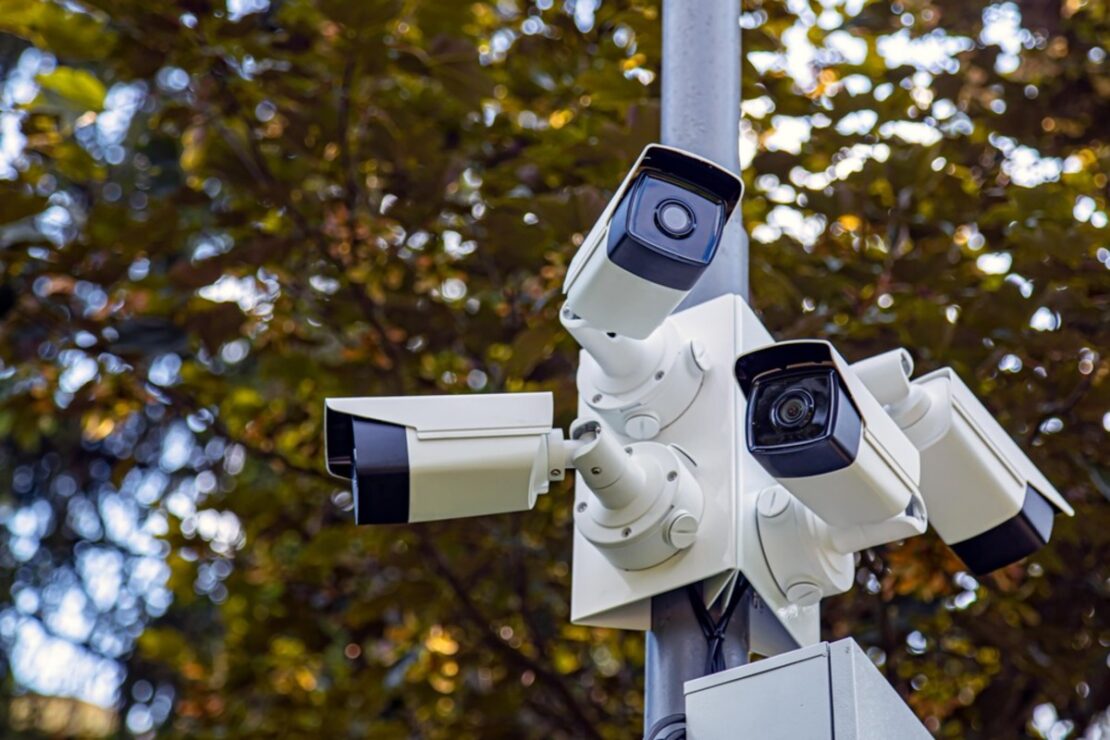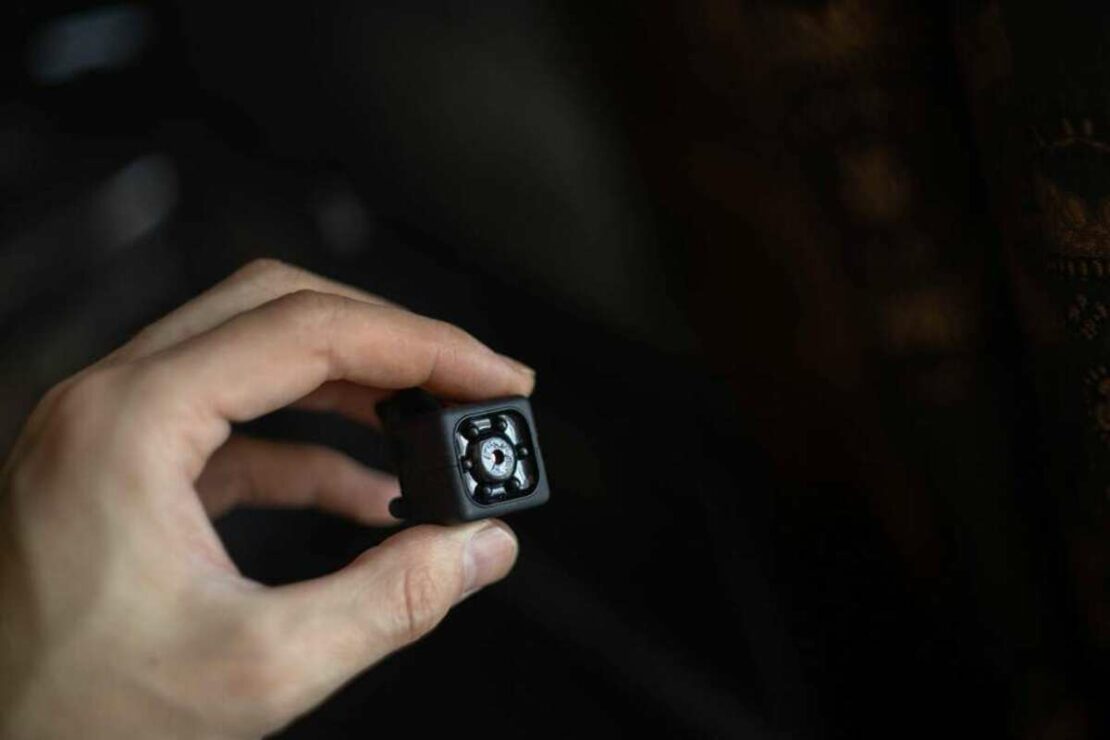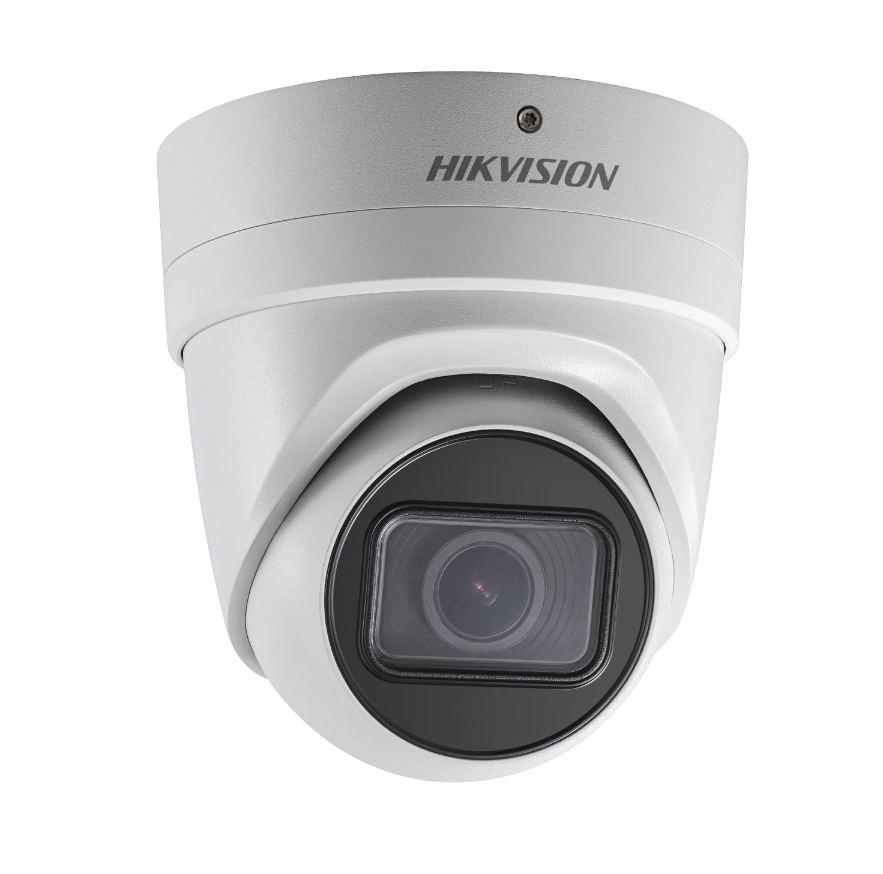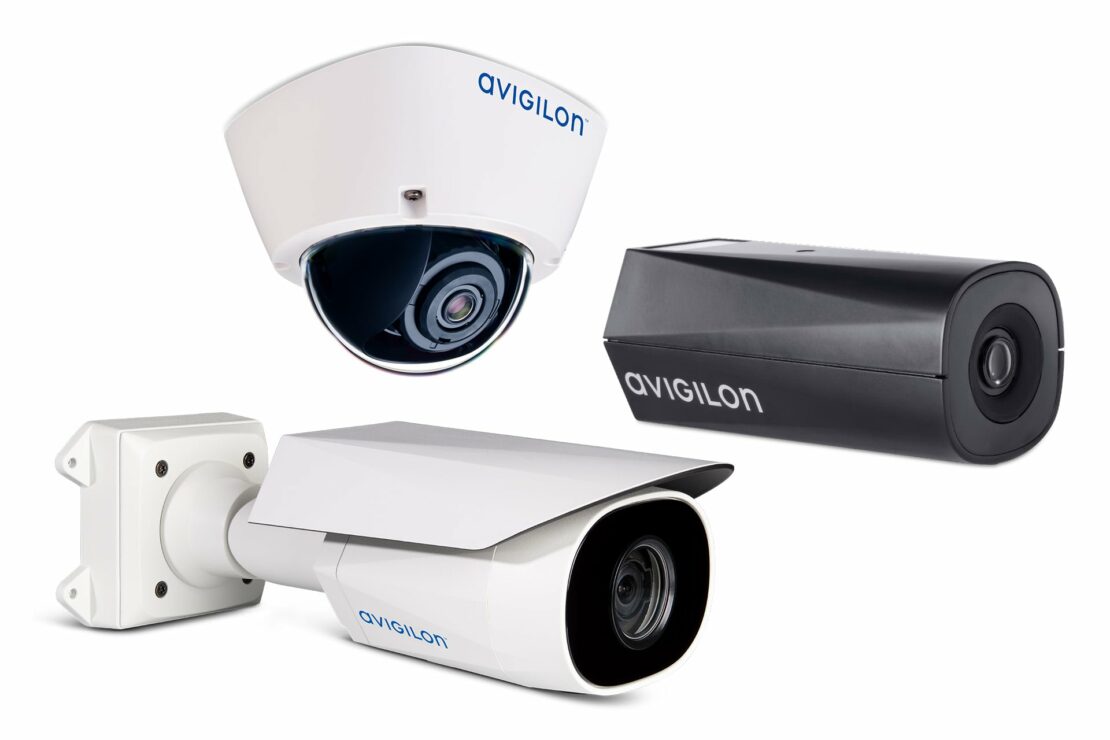
In this comprehensive guide, we look at the different types of commercial CCTV cameras. For businesses, surveillance cameras play a critical role in detecting and deterring crime. When designing an effective commercial CCTV system, camera choice is key in meeting all surveillance objectives.
For example, for internal surveillance, a mix of dome, corner and turret cameras can be deployed to monitor staff. Internal CCTV cameras are also deployed to detect employee theft and anti-social workplace behaviour.
For external surveillance, bullet, turret and PTZ cameras often form part of a comprehensive commercial CCTV system. Furthermore, thermal CCTV cameras can be deployed to aid accurate threat detection in low-light settings.
What are the different types of commercial CCTV cameras?
This guide to the different types of commercial CCTV cameras is split into six parts. In each section, we offer an overview of each CCTV camera and their features and benefits. We will also provide a summary of the setting where they are best deployed.
Table of contents
Let’s get started with our guide to commercial surveillance cameras
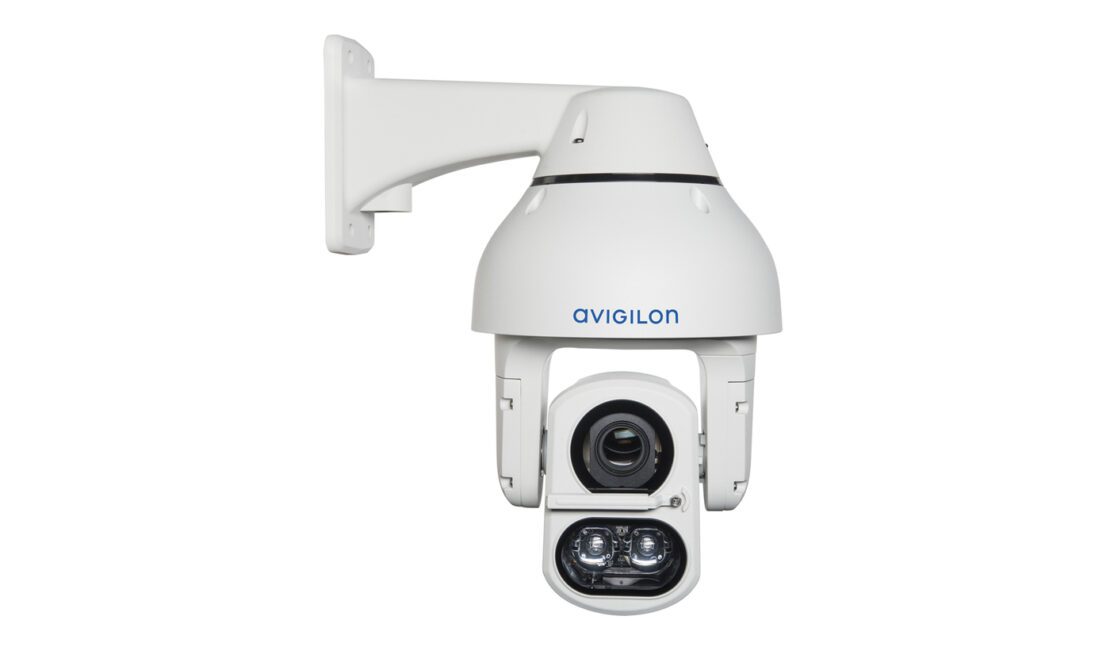
PTZ surveillance cameras
Pan-tilt-zoom [PTZ] cameras can tilt up and down, pan from left to right and zoom in and out. They are a solid choice for monitoring large, open areas. This can include:
- Supermarkets & retail outlets
- Solar farms
- Construction sites
- Airports & train stations
- Warehouse and industrial site perimeters
- Commercial and office car parks
PTZ cameras are also effective for monitoring and tracking security events as they unfold. Internal or offsite security personnel can control them using a remote camera controller. Therefore, intruders can be tracked and monitored in real-time.
Furthermore, PTZ surveillance cameras can also be set to follow motion-triggered activity or a pre-set schedule.
PTZ camera features
These advanced surveillance cameras offer a wide range of built-in, specialised features. As an effective part to many external commercial CCTV system, some of their key features include:
- Pan, tilt and zoom functionality
- Remote control capabilities
- 360-degree coverage
- High quality surveillance footage over a long range
- Motion based auto-tracking
- Integration with audio challenge
PTZ camera benefits
These commercial CCTV cameras offer a host of benefits. these include:
- Accurate situational analysis through zooming in on security threats in real-time – helping security operatives to deal with the threat accordingly
- Audio intervention compatible, – helping you deal with threats in real-time, and warning intruders that their presence is known
- Automatic threat tracking – AI-driven technology enhancing human intervention
- Accurate threat detection at range – fewer cameras needed to cover the site
What are the disadvantages of PTZ cameras?
While PTZ CCTV cameras offer some unique benefits, mentioned above, they do suffer a few shortcomings.
For example, they have a limited field of view, as they can’t record areas that the camera isn’t specifically positioned to cover. This is where long-range, his-res bullet and thermal cameras can form part of a well-designed |CCTV system.
Also, because these cameras have many moving parts, they are more prone to damage or being vandalised.
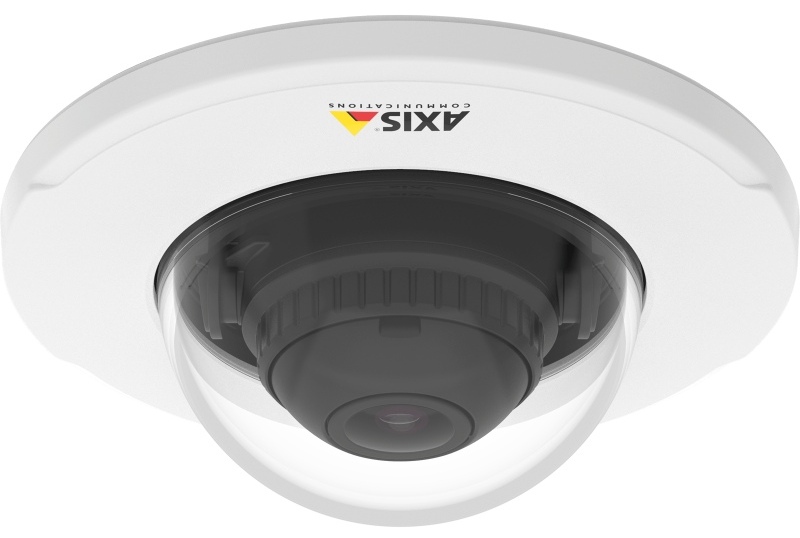
Dome CCTV cameras
In this part of the guide to the different types of commercial CCTV cameras, we focus on dome surveillance cameras.
Dome CCTV cameras get their name from their circular dome encasing.
Their shape makes them easier to blend in with their surroundings. Therefore, they are commonly used in:
- Restaurants
- Retail stores
- Schools
- Banks
- Hotels and casinos
- Offices
Dome CCTV cameras offer unparalleled coverage and because of their dome shape. Therefore, it’s impossible to tell what direction the lens is facing – perfect for deterring criminals.
Furthermore, they are highly versatile, making them suitable for indoor and outdoor settings.
For internal surveillance, they work perfectly for businesses looking to monitor staff, detect employee theft, and deal with issues that occur in the workplace.
When considering external surveillance, they can be deployed to provide coverage of a wide area. Lastly, due to their shape and size, they can offer a bit of stealth to a company’s surveillance efforts.
If you are considering deploying dome security cameras, there are various options available, including:
- Infrared
- Varifocal
- Anti-vandal
In the next part of this section covering dome security cameras, we look at the features and benefits.
Dome surveillance camera features
Dome CCTV cameras offer a range of built-in features. As part of a robust, effective CCTV system these features include:
- Night vision capabilities with infrared LED light
- Vandal and tamper resistant
- A solid, robust design
- Discreet unobtrusive design aid internal surveillance
- Versatile across internal and external surveillance
Dome security camera benefits
These robust commercial CCTV cameras offer a wide range of security benefits. Here is a quick breakdown of the main benefits of dome cameras:
- The vandal-resistant and solid glass casing stops your CCTV system from becoming obsolete
- Dome surveillance cameras are weatherproof, and therefore can be deployed in external settings to offer a wide coverage area
- They are versatile and inconspicuous, offering an element of stealth to your CCTV security system
- The built-in IR capabilities enable accurate detection and quality surveillance footage in low & no light
What are the disadvantages of dome CCTV cameras?
Whilst there are plenty of advantages and benefits of dome CCTV cameras, there are a few drawbacks too.
To summarise, some of the disadvantages are:
The IR lighting can reflect off the dome causing white halo shapes on your CCTV footage. This can make accurate threat detection an issue. This is where turret and bullet cameras could offer an alternative security camera solution
The dome itself can become dirty, also affecting surveillance footage quality and threat detection.
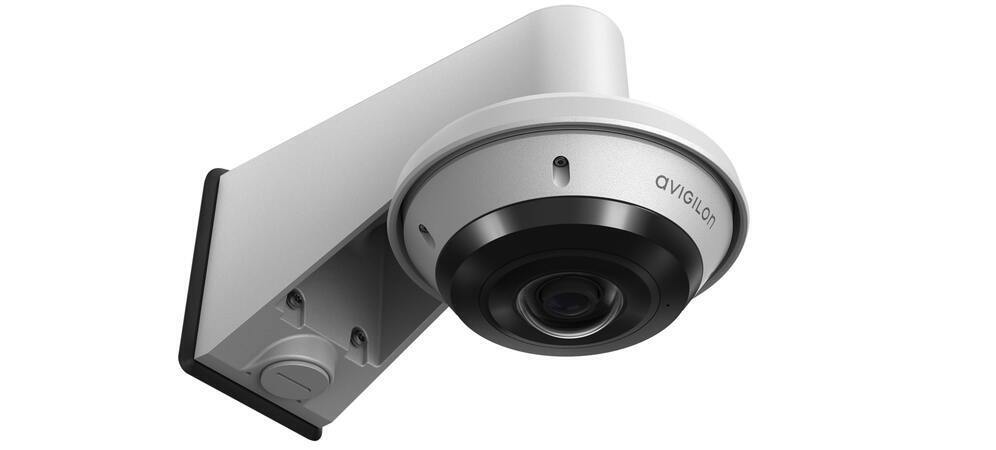
Fisheye surveillance cameras
In this section of the guide to the different types of CCTV cameras, we look at fisheye surveillance cameras. Fisheye CCTV surveillance cameras enable 360-degree coverage from a single vantage point.
Furthermore, to aid threat detection, fisheye cameras often come with built-in IR capabilities and AI-driven video analytics.
Therefore, this makes fisheye’s a solid choice for businesses that suffer from false alarms caused by the elements, insects, falling branches and shadows.
Typically, fisheye surveillance cameras are best suited to:
- Offices, commercial premises and places of work
- Logistics & industrial sites
- Car showrooms and forecourts
- Shops and car parks
- School car parks and playgrounds
Fisheye surveillance camera features
Fisheye surveillance cameras are incredibly unique. They offer a variety of features that no other surveillance camera can boast. These features include:
- Stylish, low-profile design, best for internal surveillance
- Built-in AI-driven analytics
- Advanced object and threat detection abilities
- Integration with audio challenge
- Damage and tamper resistant
- Integrated with IR illuminators for accurate night vision
Fisheye CCTV camera benefits
When properly integrated into a security system, fisheye cameras offer a range of benefits, unlike any other surveillance camera.
The benefits of fisheye cameras include:
- Advanced threat detection, meaning security operatives can spot and deal with early-stage threats before they escalate
- AI-driven analytics facilitate a reduction in false alarms and accurate human detection
- Fewer cameras may need to be deployed due to one camera offering 360-degree coverage from a single vantage point
- Effective external surveillance due to the camera’s weatherproof design
What are the disadvantages of fisheye CCTV surveillance cameras?
Whilst fisheye surveillance cameras are a fantastic choice for sites looking to gain footage across a wide area, there are some drawbacks.
Fisheye’s do produce warped images that need to be flattened. This is only possible via specialist video management software. Furthermore, your commercial CCTV camera system will need to include an NVR with image de-warping capabilities.
You will also need to consider where they can be installed. If you deploy them in a corner, the field of vision is reduced to 90-degrees.
Lastly, some fisheye surveillance cameras offer lower res video footage compared to their multi-sensor capabilities.
In the next section of this article covering the different types of commercial CCTV cameras, we focus on bullet surveillance cameras.
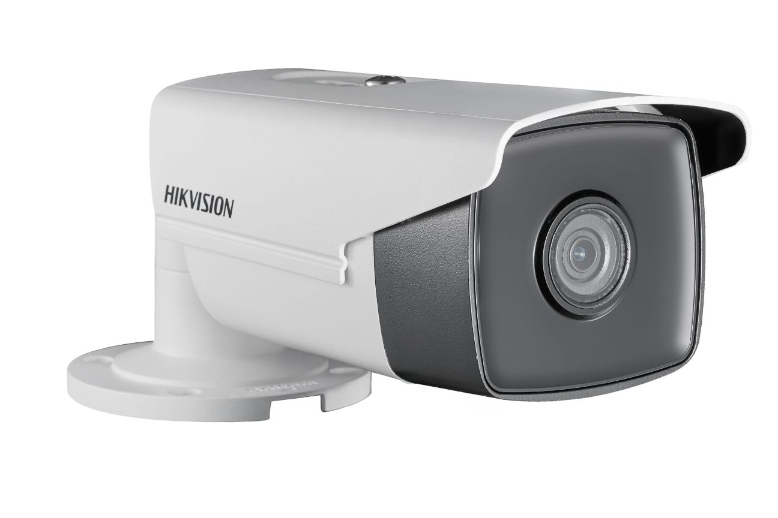
Bullet CCTV cameras
Bullet CCTV cameras are named for their resemblance to bullets.
These commercial security cameras are small in size, usually 2 to 2.5 inches long. Therefore, this makes them easy to conceal. Despite their small compact size, bullet cameras offer outstanding performance.
They have a fixed focus lens and are appropriate for external and internal surveillance requirements. Furthermore, there are also some models of bullet CCTV cameras with infrared capabilities for use at night.
Bullets can be deployed in a range of settings including:
- Offices
- Warehouses
- Schools
- Gyms
- Industrial sites
In the next three sections of our review of bullet cameras, we look at their features, benefits and drawbacks.
Bullet security camera features
These cameras have a wide range of useful features, which make them a solid option when designing a commercial CCTV camera system
Their features include:
- Built-in IR illuminators for threat detection
- Licence plate recognition software (ANPR)
- Large camera lenses
- Weatherproof design
- High-resolution footage allows for long-range threat detection
Bullet surveillance camera benefits
Alongside their features, these cameras have a lot to offer when properly integrated into a commercial CCTV system. Some of the benefits of bullet surveillance cameras are:
- A noticeable presence offering a visual deterrent, helping to deter thieves, trespassers and vandals
- The ability to track suspicious vehicles with ANPR technology
- Accurate and advanced threat detection when integrated with IR illuminators
- Flexibility through wide field of vision at short range and accurate coverage over long distances
What are the disadvantages of bullet CCTV cameras?
Bullet commercial security cameras are fantastic surveillance devices that can be deployed in a range of settings.
That said, there are a couple of drawbacks to consider.
They are very noticeable and can be vandalised and tampered with by criminals, who are scoping out a site.
However, this could be a positive.
If they are noticeable, opportunistic criminals may think twice about entering a site.
Lastly, unlike dome cameras they aren’t vandal-resistant – so installing them high on a wall or pole would be an option to negate this drawback.

Turret surveillance cameras
Turret CCTV cameras, also known as eyeball cameras, have a ball and socket design that allows the camera to pivot in any direction. They are easy to install and offer tons of flexibility because you can aim the lens anywhere you want.
Turrets offer a wider range of benefits than dome and bullet cameras. They combine the best of both worlds by supplying excellent video surveillance footage 24/7 and have a compact and durable design.
Turret cameras can be deployed at commercial sites such as:
- Schools and universities
- Solar sites
- Farms and equestrian centres
- Warehouses and factories
- Offices and other places of work
Related reading: Turret Vs dome cameras
Now, let’s have a look at the features, benefits and disadvantages of turret surveillance cameras.
Turret camera features
Turret cameras come with an impressive range of features, including:
- Built-in IR night vision
- No glare effects associated with dome cameras
- Easy to adjust and change the target viewing area
- Discreet and unobtrusive
- They can be used in external surveillance settings with no IR bounce
- Small and compact
- They provide crystal-clear CCTV footage
Now let’s look at the benefits of turret CCTV cameras.
Turret CCTV camera benefits
When used effectively in a surveillance camera system, there are a variety of benefits to using turret CCTV cameras.
These include:
- Being compact and discreet, making them difficult for vandals to spot
- Great detection accuracy with high quality footage
- Deployable in a range of settings, both internal and external
- Super night vision, threat detection in little to no light
What are the disadvantages of turret CCTV cameras?
Turrets really are a good all-round commercial security camera.
There really aren’t drawbacks, particularly when compared to dome and bullet surveillance cameras.
The only thing we would mention is that they can’t perform the same function as a fisheye or PTZ camera. If you are looking for panoramic coverage, or the ability to track an intruder, you would need to consider PTZs or fisheye’s.
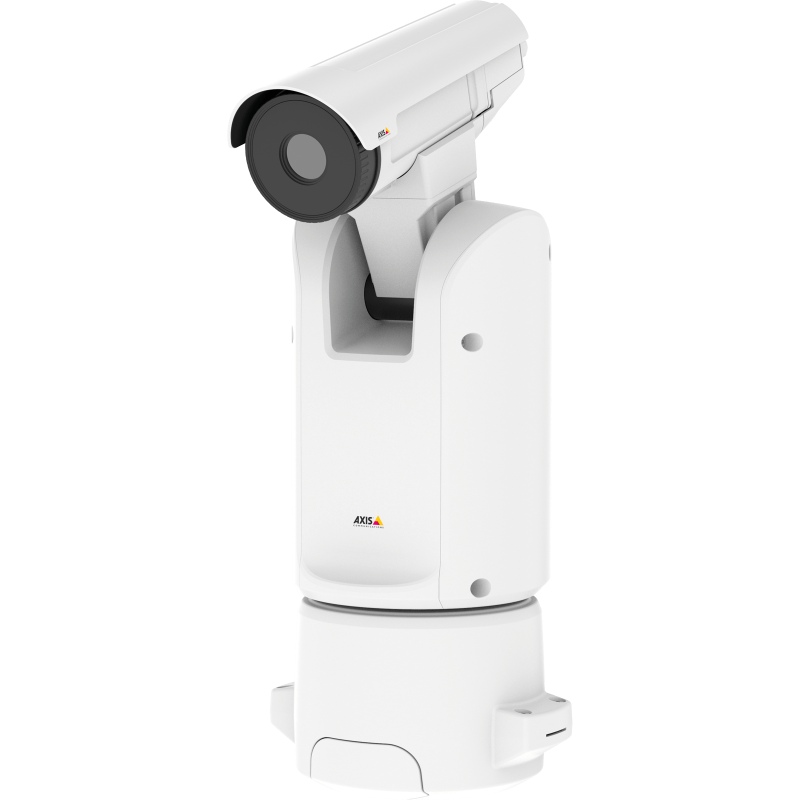
Thermal surveillance cameras
In this section of this comprehensive guide to surveillance devices, we look at thermal cameras.
Thermal CCTV cameras offer the incredibly unique and versatile ability to view objects otherwise undetectable to the human eye. By converting infrared information into a colour scale image, thermal surveillance cameras can display images in situations where other cameras would struggle.
For large, expansive sites vulnerable to threats in no-light situations, thermal cameras are ideal for advanced object and human detection.
This utility is why some law enforcement forces have adopted the use of thermal cameras, as the technology allows them to find and track criminals in complete darkness.
This applies to tracking criminals through thick woodlands or other settings where vision is impaired. that impair vision.
Thermal surveillance cameras are also highly effective in harsh weather conditions and can help reduce the impact of false alarms.
Thermal surveillance cameras are often deployed at:
- Solar farms
- High-security sites
- Government buildings
- Warehouses and industrial parks
- Hospitals
- Farms and rural sites
To wrap up our review of thermal cameras, we will now have a quick look at their key features, advantages and drawbacks.
Thermal surveillance camera features
In this short guide to the different types of CCTV cameras, we look at the features of thermal surveillance cameras. These highly specialised surveillance cameras come with a wealth of features, including:
- Infrared sensors used to capture the heat signature of an object
- Detector pixels, thousands in a single camera using individual infrared energy reading to produce an image
- Some infrared cameras also include a visible light camera, which automatically captures a standard digital image alongside the thermal camera
Now let’s summarise the benefits of thermal CCTV cameras.
Thermal CCTV camera benefits
Now let’s take a look at the benefits of thermal surveillance cameras.
Thanks to their utility, thermal cameras have a massive array of benefits when properly incorporated into a surveillance system.
These include:
- Low light performance, thermal imaging still detects heat regardless of light settings.
- Fewer false alarms and improved threat and object detection
- Fire detection, thermal cameras are ideal for picking up alarming heat signatures
- No visual limitations – regular surveillance cameras rely on visible light for detection, thermal cameras do not have this issue
The different types of commercial cameras – article summary
The aim of this comprehensive guide to commercial CCTV cameras is to inform those in charge of security of the options available to them.
Each type of surveillance camera has its own set of features, benefits and drawbacks.
Often, when designing a robust commercial CCTV system, a range of cameras need to be deployed. This is where specialists like the team here at Safeguard Systems, deliver massive value to our customers.
Looking for a new or upgraded CCTV system to protect your commercial premises or site?
Call us today on 0800 689 1835.
